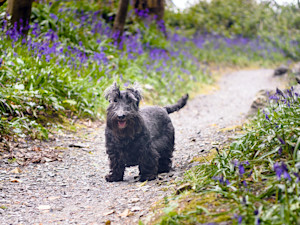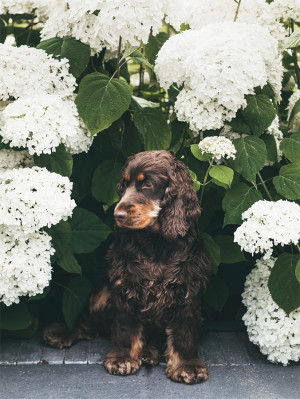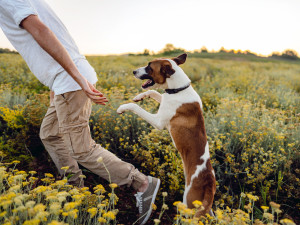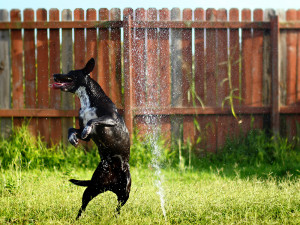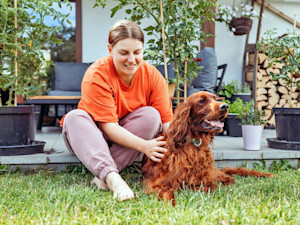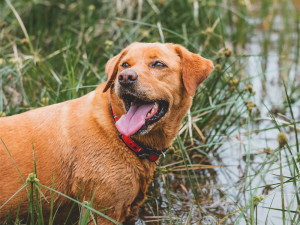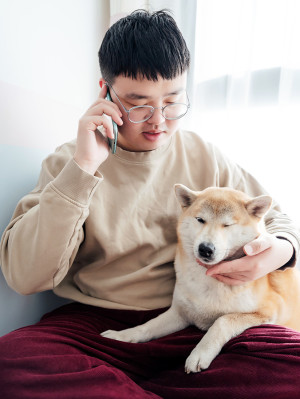Are Buttercups Toxic to Dogs?
Lovely flower, not so lovely when eaten by your dog...

Share Article
In this article:
How poisonous are buttercups to dogs?opens in a new tab What makes buttercups toxic to dogs?opens in a new tab How to identify a buttercupopens in a new tab Symptoms of buttercup poisoning in dogsopens in a new tab How do dogs get buttercup poisoning?opens in a new tab Buttercup poisoning quantitiesopens in a new tab Buttercup poisoning diagnosisopens in a new tab Buttercup poisoning treatmentopens in a new tab Dog buttercup poisoning FAQsopens in a new tab
A field of soft yellow buttercups brings a smile to anyone’s face, and we all remember holding them under our chins as children to see if the myth was true that it reflected yellow if we liked butter. In hindsight, that one always worked because who doesn’t like butter? But what if I was to tell you that these flowers are not as innocent as they seem, and can actually be harmful to both us and our dogs?
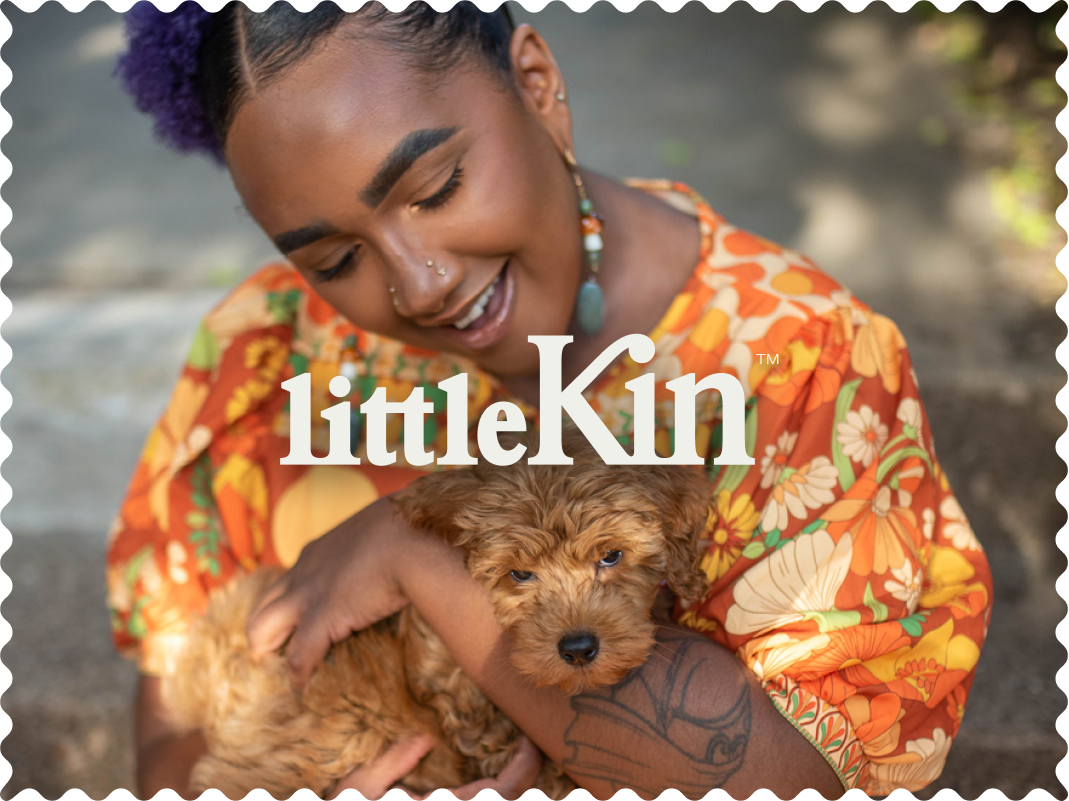
littleKin™ is Kinship’s home just for puppy and kitten parents. Bop over to check out expert advice, new pet tools, and special deals—all curated for your newest family member.
opens in a new tabHow poisonous are buttercups to dogs?
Fortunately, buttercups hold a relatively low level of risk to our dogs and ourselves, but nevertheless it is important to know how this small plant can affect the health of our pets. While the buttercup is unbroken they are of no concern to touch but crushing or biting into the plant (say, with curious little puppy teethopens in a new tab) can lead to mild to moderate health issues, with severe issues occurring only rarely. The main concern is when animals eat the buttercups, which dogs don’t tend to do.
What makes buttercups toxic for dogs?
So, how can these beautiful little weeds be harmful? The plants contain an unstable substance called glycoside ranunculin which quickly forms the toxic protoanemonin when the plant is wounded, such as when eaten or crushed. The toxin is most concentrated within the flower part of the plant, however the compound breaks down quickly and so loses its toxicity in dried cut plants, and so can be safely consumed by animals when dry in hay.
How to identify a buttercup
The sight of a field of yellow buttercups is a common one in the UK, especially in the spring sunshine, but they can be found from April through to October. Buttercups are sometimes called ‘tangle-grass’, and you can see why as the shoots and leaves sprawl across patches of land before the flowers emerge. The flowers themself have five petals, coloured a beautiful shiny yellow, the leaves are roughly triangular with 3–5 lobes and are hairy.
They can be found almost everywhere in the UK but they tend to be found in great quantities in meadows, as they are usually avoided by livestock, as well as in woodlands and gardens.
Symptoms of buttercup poisoning in dogs
Mild symptoms of buttercup poisoning in dogs
The most common effects of buttercup poisoning is from the bitter substance protoanemonin. Contact with protoanemonin can cause blisters where it touches the skin, lips and mouth, as well as along the gastrointestinal tract if consumed. It can increase the risk of sunburn, and cause nausea and vomiting.
Severe symptoms of buttercup poisoning in dogs
Rarely, if consumed in quantity, protoanemonin poisoning can lead to dizziness and spasms, acute hepatitis, intestinal disorders, respiratory failure and death. This is only a possibility in dogs from what has been seen in other animals, as the risk of ingesting such a significant quantity is highly unlikely in grazing livestock let alone dogs.
How do dogs get buttercup poisoning?
While they are not grazing animals like horses and cows, some dogs like to enjoy the odd bit of grassopens in a new tab occasionally and so they can still be at risk of biting into a buttercup. They can also come into contact with buttercups while running or rolling in grass. Dogs do have a degree of protection due to their fur, but any skin contact with the crushed flowers can cause blisters.
How many buttercups does your dog need to eat to get sick?
Due to the bitterness of the flowers, it is unlikely your dog will consume enough of the plants to make them severely sick, but a few mouthfuls may be enough to cause nausea and vomiting. Blisters are more commonly seen around the lips and mouth after taking a bite then deciding against it once tasted, or if they brush up against the flower.
How vets diagnose buttercup poisoning in dogs
Your vet will be able to diagnose buttercup poisoning based on clinical signs, along with the history you provide about what your pet may have come into contact with. Clinical signs that may be seen include:
blisters on skin, around lips and inside mouth
excessive drooling
swelling around the face
reduced appetite
If you notice any of these signs talk to your vet for guidance, and monitor your pet closely if you think they have consumed any buttercups.
How to treat buttercup poisoning in dogs
Treatment for buttercup poisoning is symptomatic, treating them as symptoms arise. Vomiting can occur within 30 mins of ingestion while diarrhoea can be seen later, and usually gastrointestinal signs resolve over 24 hours. Blisters can be quite sore and so may need topical treatment along with pain relief, and if there are any blisters around the mouth or along the gastrointestinal tract diet may need to be adapted to reduce pain while eating.
Can you treat buttercup poisoning at home?
In mild cases yes, this can be treated at home. If there is any vomiting or diarrhoea it is best to stick to a bland diet to help settle the stomach, and symptoms should resolve within 24 hours. If vomiting or diarrhoea persist after 24 hours it is advisable to speak to your vet, and other signs you should look out for and to call your vet about include:
blisters
difficulty eating
lethargy
jaundice (yellowing of the skin)
ataxia (loss of balance) or wobbliness
The bottom line: are buttercups poisonous to dogs?
Yes, buttercups are poisonous to dogs. Care should be taken when walking through areas of dense buttercups and pets should be discouraged to bite or eat buttercups if possible. If you think your pet may have buttercup or another plant based poisoning or if you see symptoms described; please contact your vet for investigation and treatment options.
Buttercups and dogs: frequently asked questions
What happens if dogs eat buttercups?
Contact with the toxic substance in buttercups can cause blisters and gastrointestinal issues if consumed. Severe symptoms of poisoning are extremely rare but can include hepatitis, respiratory failure, spasms and possibly death.
What are the most poisonous flowers to dogs?
There are many toxic plantsopens in a new tab including: buttercups, daffodils, rhododendron, yew, cherry laurel, deadly nightshade, elderberry, English ivy, foxglove, liliesopens in a new tab, mistletoe, Mother-in-Law’s tongue along with others.
What is the most common poison for dogs?
The most commonly seen toxicity cases in dogsopens in a new tab are from human medications, foods and products. Such as: ibuprofen, chocolateopens in a new tab, grapes, raisins, onions, garlic, antifreeze, rodenticides and cannabisopens in a new tab.
Do any animals eat buttercups?
Due to the bitter taste and toxicity, animals tend to avoid eating buttercups, but when food is scarce in over-grazed fields horses and livestock have been known to eat them. Buttercups lose their toxicity when cut and dried so can be found in hay and can be safely consumed by horses and livestock.
References
Yilmaz, Bulent. “ Lesser Celandine (Pilewort) Induced Acute Toxic Liver Injury: The First Case Report Worldwideopens in a new tab.” World Journal of Hepatology, vol. 7, no. 2, Baishideng Publishing Group Inc., 2014, p. 285.
Fez. “ Buttercups (Ranunculus Species) Identification Guide -.opens in a new tab” Totally Wild UK, 8 Feb. 2022.
Mount, M. E. "Nature's toxic beauties." (2004): 1199-1204
Strevey, Hally, et al. Tall Buttercup: Identification, Biology and Integratedopens in a new tab ...,. Accessed 6 Feb. 2025.
Dogs Trust “ List of Poisonous Plants, Garden and Household Substancesopens in a new tab.” Accessed 6 Feb. 2025.
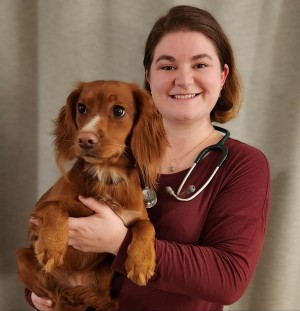
Dr Josephine Corrick, BVMSci, BSc, MRCVS
Dr Josephine Corrick, BVMSci, BSc, MRCVS is a veterinary surgeon based in the south of Scotland where she has been since graduating from the University of Surrey. She enjoys working in general practice treating small animals. Her particular interests include diagnostic imaging and the treatment of wildlife.
Having found a passion for veterinary medicine after doing a degree in Equine Sports Science she still enjoys including horses in her life by spending time with her highland ponies. Alongside her clinical work, she helps run a smallholding caring for rare breed sheep and exploring the Scottish countryside with her young Cocker Spaniel.
Related articles
![dog running through a field of yellow flowers jumping up at their pet parent]() opens in a new tab
opens in a new tab5 Ways To Keep Your Pup Safe This Spring
There’s no need to worry, if you know what to look out for
![Dog-friendly backyard, dog playing in the sprinkler]() opens in a new tab
opens in a new tab6 Ways to Make Your Back Garden a Canine Paradise
Paddling pools aren’t just for kids
![A woman sitting on her patio with her Irish Setter dog on the grass in front of her.]() opens in a new tab
opens in a new tabHow To Create a Dog-Friendly Garden
Green fingers at the ready...
![dog playing in a pond]() opens in a new tab
opens in a new tabWater Hemlock: Dangerous Plants for Dogs
Pet parents watch out this summer for a common, but deadly plant
![Man with glasses on the phone with dog on his lap]() opens in a new tab
opens in a new tabWhat to Do When Your Dog Eats Something Toxic
So Fido has been in your chocolate stash... here’s what to do

